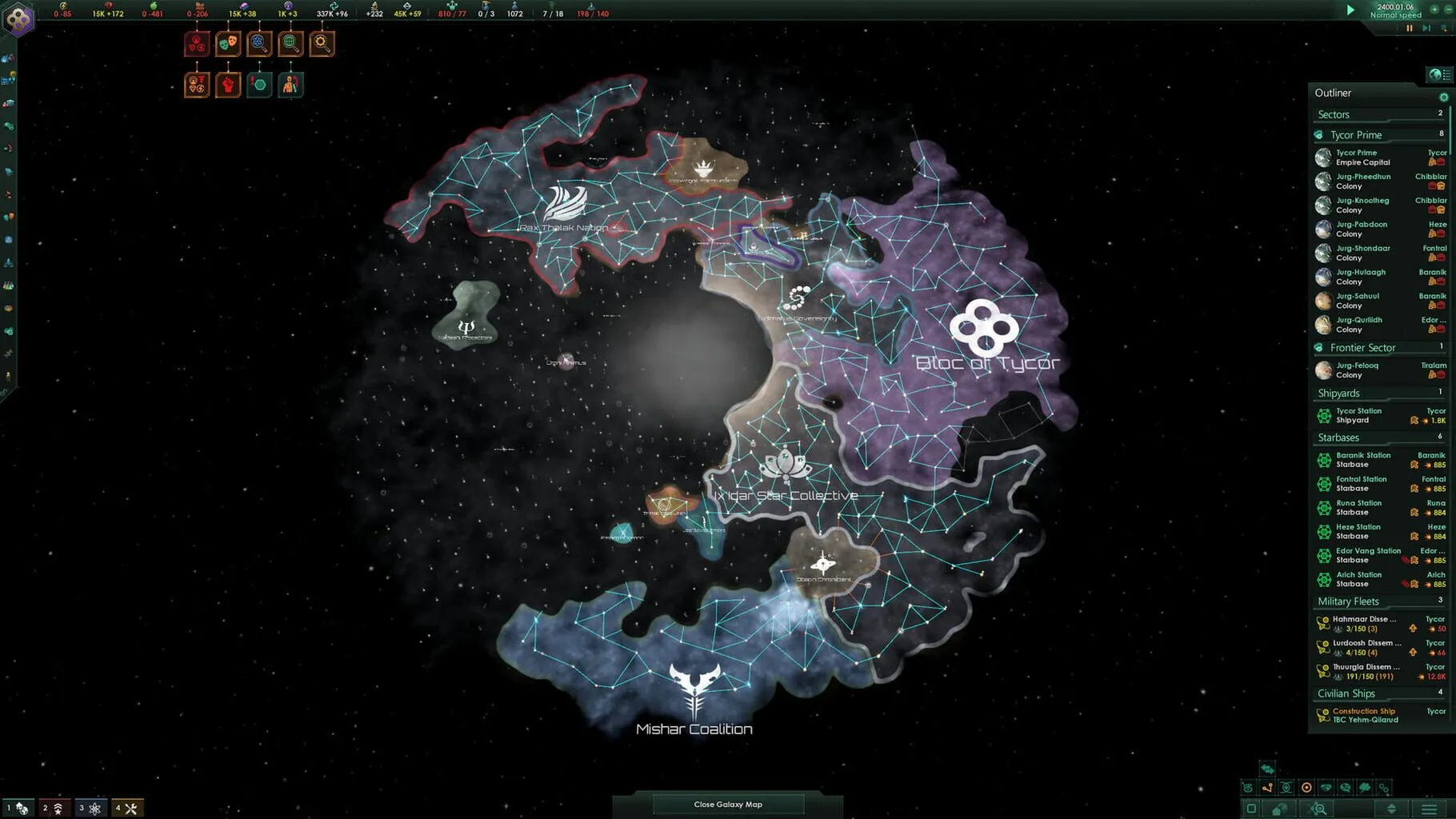Stellaris, the grand strategy space opera from Paradox Interactive, offers a vast universe teeming with opportunities for conquest and diplomacy. However, amidst the stars, conflict is inevitable. Whether you’re a neophyte admiral or a shrewd fleet commander, mastering the art of Stellaris combat is paramount to your empire’s survival and expansion. This extensive guide dives deep into the art of war in Stellaris, from basic skirmishes to the orchestration of grand fleets. Let’s ignite our thrusters and embark on a journey to combat mastery.
Basic Combat Techniques
At its core, Stellaris features a real-time combat system that allows for strategic depth through careful planning and understanding of basic combat mechanics. Here’s what you need to get your starships off the ground:
Understanding Ship Classes
Stellaris features a plethora of ship classes, from nimble Corvettes to the formidable Titans. Each class plays a unique role in your fleet:
- Corvettes are your swift scouts and harassers, ideal for quick strikes and evading heavier ships.
- Destroyers serve as anti-corvette platforms and are equipped to take down smaller ships with precision.
- Cruisers offer a balanced mix of firepower and survivability, making them versatile assets in any fleet.
- Battleships are the backbone of your fleet, bringing devastating firepower and capable of absorbing significant damage.
- Titans are the juggernauts of Stellaris, offering game-changing auras and the ability to unleash colossal destruction.
Weapons and Defenses
Balancing your fleet’s offensive and defensive capabilities is crucial. Weapons in Stellaris are divided into three main categories:
- Energy Weapons are effective against armor but less so against shields.
- Kinetic Weapons excel at shield damage but struggle against armor.
- Missiles/Torpedoes bypass shields entirely but can be intercepted by point-defense systems.
For defenses, ships can be equipped with Shields, Armor, and Hull enhancements. Shields regenerate and are weak against kinetic, armors absorb damage and are vulnerable to energy, and hulls are your ship’s last line of defense, with certain technologies allowing for passive healing.
Fleet Composition
A balanced fleet can adapt to various threats and opponents. Early on, a mix of corvettes and destroyers can handle most threats, but as the game progresses, incorporating cruisers and battleships is vital. Specialist ships like Titans and Carriers (battleships equipped with strike craft) should be added as force multipliers. The golden rule? Don’t put all your eggs in one basket, or in gamer speak, don’t build a fleet of glass cannons.
Advanced Tactics
With the basics down, it’s time to maneuver into more nuanced strategies. Here’s how to level up your game:
Know Your Enemy
Before engaging, scout with faster, smaller ships to identify enemy fleet composition. Adjust your ships’ loadouts in shipyards to counter. Facing shield-heavy fleets? Kinetic weapons are your friend. An armor-stacked behemoth? It’s time for those energy weapons to shine. Adaptability is key.
Positioning and Terrain
Stellaris’ space battles are not just about who has the bigger guns, but also who has the tactical high ground. Engaging in or near a nebula can disable long-range sensors, forcing close-quarters combat. Asteroid fields and pulsars can affect ship defenses, tilting the battle in favor of certain weapon types.
Strike Craft and Point Defense
The inclusion of strike craft (fighters and bombers) and point-defense systems (to counter missiles and strike craft) adds another layer to fleet battles. A well-balanced fleet includes a mix of these to protect against and exploit enemy weaknesses. Strike craft excel against slow, lumbering targets, while point-defense can nullify an enemy’s missile barrage.
Enemy Patterns
Understanding the AI’s behavior patterns can give you an edge. Each AI empire follows certain doctrines that can be exploited:
- Aggressive empires often sport fleets with high damage output but lower defenses. Hit them hard and fast, focusing on their fleet’s DPS (damage per second) capabilities.
- Defensive empires lean on heavily fortified positions. Infiltration and surgical strikes against their infrastructure can draw out their fleets into unfavorable conditions.
- Technologically advanced opponents might deploy overwhelming force multipliers. Subterfuge and espionage (e.g., stealing tech, sabotaging starbases) can level the playing field.
Using Fleet
Coordination and Fleets in Being
The essence of fleet usage in Stellaris is not just amassing power but wielding it wisely. Coordination between multiple fleets can allow for pincer maneuvers, encirclements, and hit-and-run tactics that confuse and decimate opponents. Moreover, the mere presence of a powerful fleet (a fleet in being, in naval parlance) can deter enemy movements and protect key assets without firing a single shot.
Specialized Task Forces
As your empire grows, consider creating specialized task forces for particular missions:
- Rapid Response Fleets composed of corvettes and destroyers can chase down enemy raiders or respond to sudden threats.
- Siege Fleets with heavy artillery battleships can crack fortified positions or besiege planets.
- Defense Fleets focus on point-defense and fighter coverage to protect your assets from missile-heavy foes or swarms of strike craft.
Combat Strategy
With tactics and fleet management under your belt, developing overarching strategies will secure your place among the stars:
Expansion and Consolidation
Early game strategy revolves around rapid expansion and consolidation of power. Secure chokepoints with starbases and place your fleets in strategic positions to deter aggression. Aggressive early expansion can pay dividends but risks overextending and exposing your flanks to opportunistic neighbors.
Adapt and Overcome
Mid to late game, the focus shifts to adapting to the galactic political climate and the evolving military landscape. Form alliances or federations to counterbalance more potent foes. Upgrade and retrofit your fleets as new technologies become available, and always have a contingency plan for when diplomacy fails.
Apocalyptic and Endgame Crisis
As the endgame approaches, existential threats to the galaxy emerge. Whether facing down the extra-dimensional horrors of the Unbidden, the relentless hordes of the Prethoryn Scourge, or the awakened might of a Fallen Empire, unity and preparation are key. Rally the galaxy to your cause or harness these crises to your advantage, leveraging chaos to expand your empire’s dominion.

